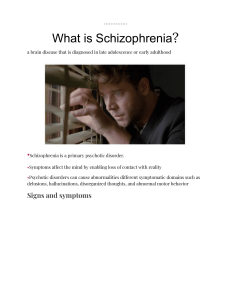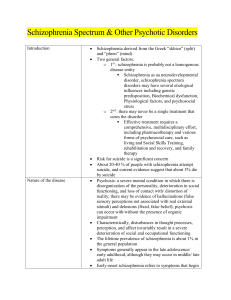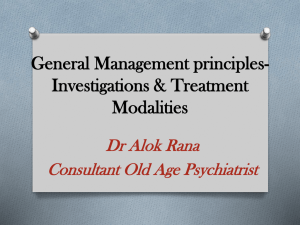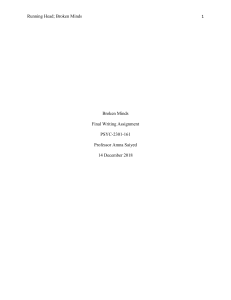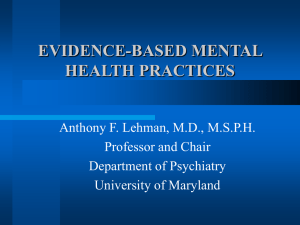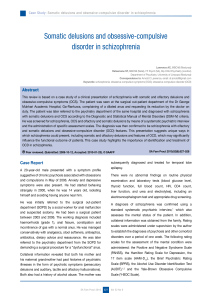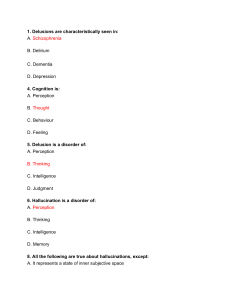9.01 - Neuroscience & Behavior Fall 2003 Massachusetts Institute of Technology
advertisement
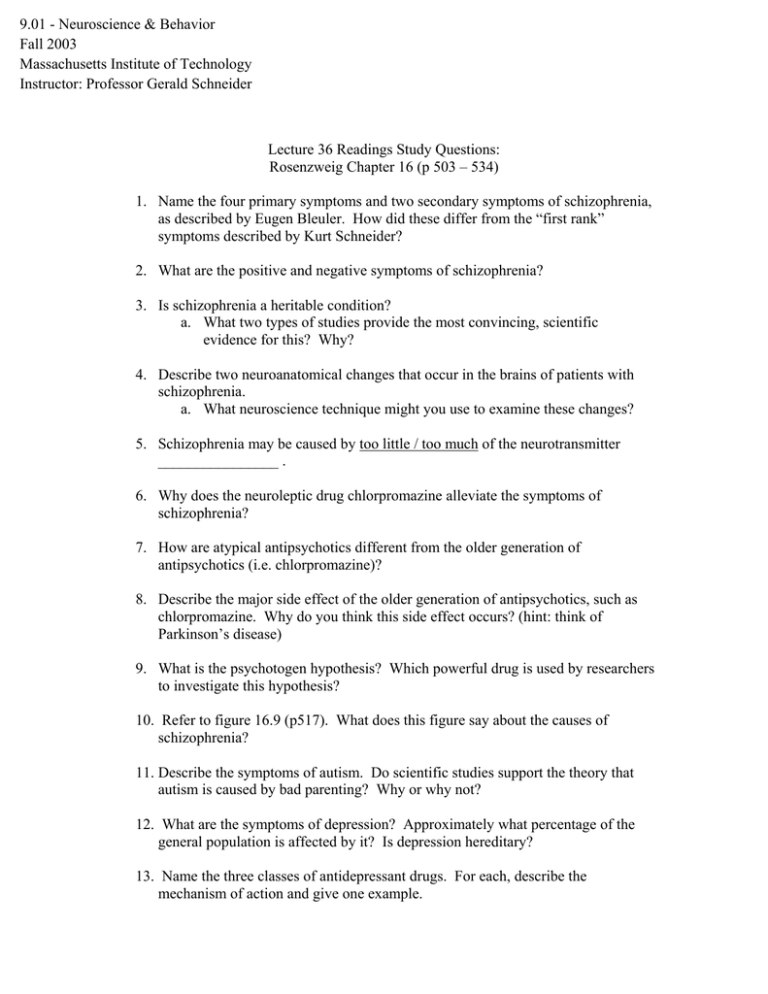
9.01 - Neuroscience & Behavior Fall 2003 Massachusetts Institute of Technology Instructor: Professor Gerald Schneider Lecture 36 Readings Study Questions: Rosenzweig Chapter 16 (p 503 – 534) 1. Name the four primary symptoms and two secondary symptoms of schizophrenia, as described by Eugen Bleuler. How did these differ from the “first rank” symptoms described by Kurt Schneider? 2. What are the positive and negative symptoms of schizophrenia? 3. Is schizophrenia a heritable condition? a. What two types of studies provide the most convincing, scientific evidence for this? Why? 4. Describe two neuroanatomical changes that occur in the brains of patients with schizophrenia. a. What neuroscience technique might you use to examine these changes? 5. Schizophrenia may be caused by too little / too much of the neurotransmitter ________________ . 6. Why does the neuroleptic drug chlorpromazine alleviate the symptoms of schizophrenia? 7. How are atypical antipsychotics different from the older generation of antipsychotics (i.e. chlorpromazine)? 8. Describe the major side effect of the older generation of antipsychotics, such as chlorpromazine. Why do you think this side effect occurs? (hint: think of Parkinson’s disease) 9. What is the psychotogen hypothesis? Which powerful drug is used by researchers to investigate this hypothesis? 10. Refer to figure 16.9 (p517). What does this figure say about the causes of schizophrenia? 11. Describe the symptoms of autism. Do scientific studies support the theory that autism is caused by bad parenting? Why or why not? 12. What are the symptoms of depression? Approximately what percentage of the general population is affected by it? Is depression hereditary? 13. Name the three classes of antidepressant drugs. For each, describe the mechanism of action and give one example. 14. What is some of the evidence that the hypothalamic-pituitary-adrenal system is involved in depression? 15. In what way is the sleep of patients with major depressive disorders different from those not suffering from depression? 16. Describe seasonal affective disorder. 17. What structural changes occur in the brains of patients with anxiety and panic disorders? 18. What is the mechanism of action of the anxiolytic drugs called benzodiazepines? Why do they reduce anxiety? 19. Does post-traumatic stress disorder have a genetic component? What brain region and neurotransmitter receptor may be involved in PTSD? 20. What are some of the symptoms of obsessive-compulsive disorder? 21. Which brain regions are implicated in OCD, and which neurotransmitter system is targeted by drugs that reduce the symptoms of OCD? 22. What is a lobotomy and why was it performed? 23. How do prions, which are proteins (not a virus or bacteria), cause damage in the brain? a. Can sterilization prevent the spread of prion disease? b. What is prion disease in humans called?
